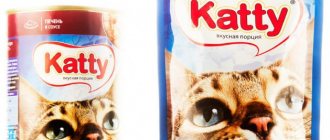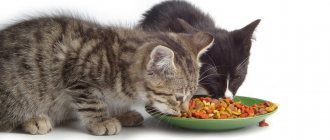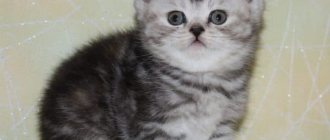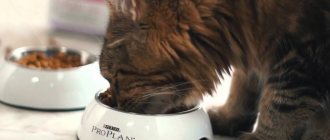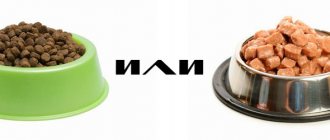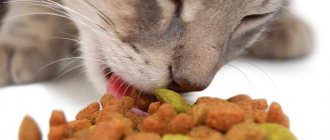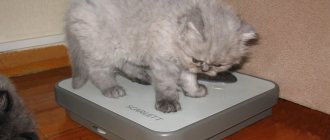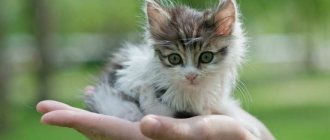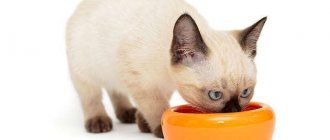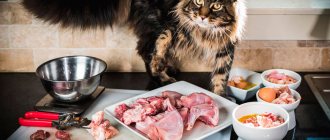The growth rate for kittens is a weight gain of 100 g per week. However, pets have no sense of proportion and are able to eat much more food than they need. Therefore, a caring owner should maintain a balance and give the pet enough food so that he does not feel hungry, but does not overeat. Achieving this balance is quite simple.
Tables of norms by age
In order to make it more convenient to understand how many times a day a small kitten should be fed, we have compiled both the amount of food and the number of feedings per day into a single table.
| Kitten age | Amount of food per day in grams (it is divided into equal-sized portions for as many feedings as the pet’s age requires) | Number of feedings per day |
| 4-8 weeks | 120 | 7 |
| 8-112 weeks | 160-180 | 6 |
| 12-20 weeks | 180-240, with a minimum meat volume of 40 g | 5 |
| 5-9 months | 180-200 | 4 |
| 9-12 months | 180-200 | 3 with gradual transition to 2 by age 1 year |
For each kitten, the norms may vary slightly depending on its individual characteristics. However, it is necessary to use them as a guide, since otherwise the pet may not receive enough nutrition or, conversely, be overfed, and obesity in cats poses a great danger, leading to the rapid development of pathologies of internal organs.
Water in a cat's diet
It is worth making sure that your pet's bowl is always filled with water. Especially if the cat eats dry food. Firstly, because the animal will naturally want to drink, and secondly, many foods contain salt, which makes the pet want to drink even more.
There is no need to force your pet to drink. You should not use existing myths on your animal about the need to “pour” water into the cat’s mouth from a syringe. Pour water into a bowl and your cat will drink as much as she needs.
Knowing the norms, the owner will correctly calculate how many bags of food to give the cat per day. Treat your pet's nutrition responsibly, and he will be healthy!
Please share the article online or send it via messenger. This will greatly help in the development of the site.

